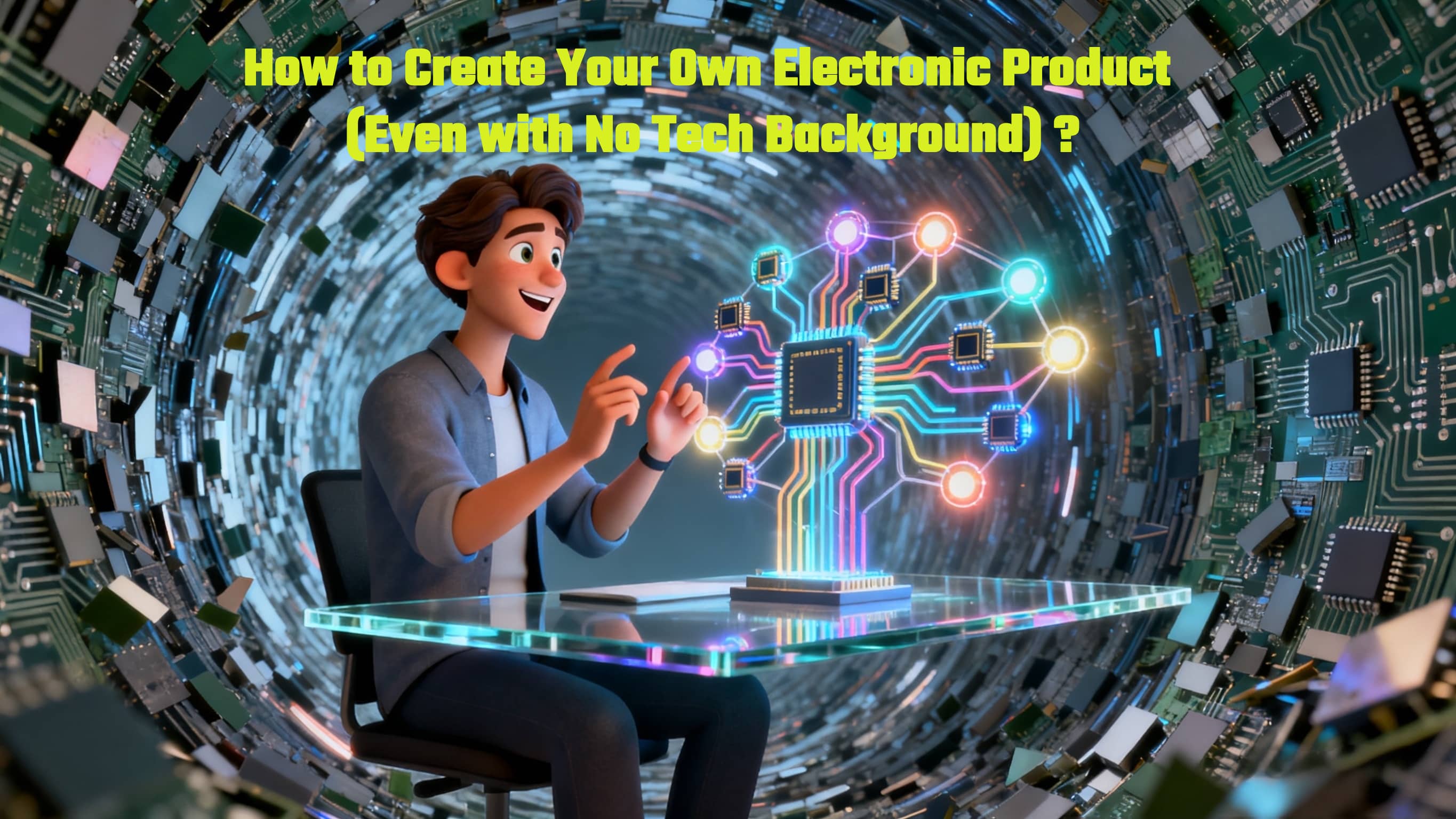
From Idea to Impact: How to Create Your Own Electronic Product (Even with No Tech Background)
Stage 1: From Zero to One - Finalizing Your Product Concept and Design
Define Your Product's "Why" and "What": Before anything else, clearly articulate what your product is, the problem it solves, and the core features it must have. Documenting this in a Product Requirements Document (PRD) is a crucial first step. Find Professional PCB Design Expertise: The heart of any electronic device is the Printed Circuit Board (PCB). It’s the foundation that holds and connects all the electronic components. For a non-technical founder, pcb design and pcb layout design are areas where you absolutely need professional help. You can find skilled freelance engineers or design firms by searching online or looking for local " pcbs near me " services. It is a wise decision to choose an electronic engineer laboratory that is relatively close to you. Because in the process of electronic design, engineers need to convert the abstract concepts in your mind into specific logical and physical manifestations, so shorter distances and face-to-face meetings will make your collaboration more intuitive and faster. Explore with Tools like KiCad: If you want to be more involved, you can explore open-source pcb design software like Kicad. While you may not create the final design yourself, familiarizing yourself with such tools will make your conversations with engineers much more productive. It helps you visualize the process from a schematic to a physical layout. But we recommend not to save money on this. Choosing an excellent and careful engineer to help you solve technical problems in one stop will be the most cost-effective way. Prepare the Bill of Materials (BOM): As the design takes shape, your engineer will list every single component needed to build your product. This list, known as the Bill of Materials or BOM, is essential for sourcing parts and calculating costs.


Stage 2: Validation - Prototyping and Testing Your Product
Fast Turnaround Prototyping: The goal here is to get a physical, testable unit in your hands as quickly as possible. Look for manufacturers that offer fast turn pcb prototype services. They can produce a small batch of your custom PCBs in just a few days. PC Board Assembly (PCBA): The bare PCBs are just boards. The process of soldering all the components from your BOM onto them is called pc board assembly. The final, populated board is referred to as an assy pcb or PCBA. A professional ems manufacturing company can handle everything from making the PCB to assembling it. Rigorous Testing and Iteration: This is the moment of truth. Once your prototypes arrive, you must test them relentlessly. You will almost certainly find bugs or areas for improvement. This phase is a cycle: test, identify issues, revise the design, and create a new prototype. Repeat this until the product works perfectly.
Zero Mistake Solutions is a company able to support you from prototyping stage to mass production stage, we don't have a MOQ limitation, we only produce according to our client's demand.
Every client will be able to enjoy smooth production experience with an exclusive project manager from enquiry to delivery, this making your mass production at here more flexible and rest assure.
Stage 3: Market Access - Ensuring Your Product is Safe and Legal to Sell
Identify Required Certifications: Different countries and regions have their own mandatory certifications for electronics. For example, products sold in the United States often require FCC certification (for electromagnetic interference), while Europe requires a CE mark (for health, safety, and environmental standards), and China requires a CCC mark. Undergo Compliance and Safety Testing: You will need to submit your perfected prototype to a certified third-party testing lab. They will put your device through a battery of tests to ensure it won't cause electrical shocks, interfere with other devices, or pose a fire hazard. Adhere to Environmental Regulations: Beyond safety, you must also comply with environmental standards like RoHS (Restriction of Hazardous Substances) and REACH. These regulations limit the use of specific hazardous materials in electronic products. Passing these certifications is not just a legal requirement; it's a mark of quality and responsibility.
Stage 4: Scaling Up - Mass Production and Quality Control
Choose the Right EMS Manufacturing Company: Your choice of a manufacturing partner is one of the most critical decisions you'll make. A reliable ems manufacturing company does more than just assemble your product; they manage the supply chain, oversee quality, and handle logistics. Vet potential partners carefully by looking at their production capabilities, quality management systems, and track record. Managing the Production Process: Mass production is a complex operation involving component sourcing, SMT (Surface-Mount Technology), through-hole assembly, final testing, and packing. A good partner specializing in electronic manufacturing services will manage this entire workflow for you, ensuring a smooth process. Implementing Strict Quality Control: Quality is non-negotiable. Throughout the production run, multiple checks and tests, such as In-Circuit Testing (ICT) and Functional Testing (FCT), must be performed to ensure every unit that leaves the factory meets your established quality standards.

